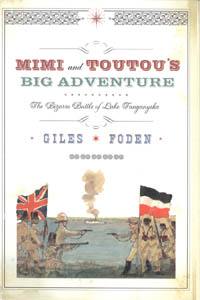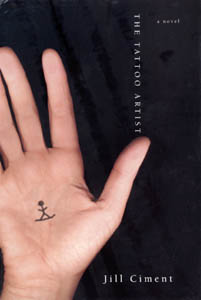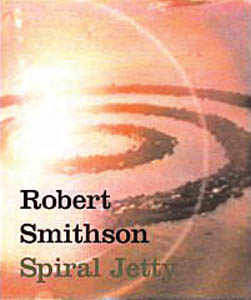![[whitespace]](/gifs/whiteline2.gif) |
Book Box

Mimi and Toutou's Big Adventure: The Bizarre Battle of Lake Tanganyika
The source story for The African Queen (both the Bogart/Hepburn movie and the C.S. Forester novel) rivals its offspring for "mad dogs and Englishmen" eccentricity. During World War I, Geoffrey Spicer, a disgraced British officer, transported two gunboats across half of Africa to Lake Tanganyika to challenge the German Navy. Like the obsessed Fitzcarraldo in Werner Herzog's movie, Spicer and company (whose ranks boasted a pet monkey named Josephine) dragged the pieces of the Mimi and the Toutou over some fearsome terrain—like "swamps which actually move about," Spicer wrote. Despite a lack of tactical skills (even his semaphore signals were indecipherable), Spicer managed to sink a German ship, then immediately spiraled into a funk, reverting to relative obscurity until re-emerging, highly disguised, as Charlie Allnut. Foden's prose, with a nod to Evelyn Waugh, is appropriately dry in its accounting of the wilder improbabilites of this too-true-to-believe war story. (By Giles Foden; Alfred A. Knopf; 250 pages; $24 cloth)

The Tattoo Artist
Jill Ciment's new novel covers a lot ground—geographical, temporal and epidermal—in a hurry. After a few years of avant-garde painting and political agitating in New York in the 1920s, Sara and her Boho lover, Philip, embark on a hunt for primitive masks and end up stranded on a Polynesian island. Blamed for the death of a tribal elder's child, the couple are punished with elaborate and painful tattoos. After Philip is shot by Japanese soldiers, Sara channels her artistic impulses into an skin-inked record of her whole life, until, 30 years later, she is returned to a world she can no longer fathom. Ciment's highly condensed, poetic style works tattooing as a metaphor for the creative process and the history of modernist art until it draws blood: "The greatness of the tattoo artist lies in her ability to gauge the degree to which she can push her art before the art kills the canvas." At times, though, Ciment's images clunk like cocoanuts on the head: a young woman's "bare breasts were so huge and projectile, they came at us like hurled footballs." (By Jill Ciment; Pantheon Books; 207 pages; $23 paper)

Robert Smithson: Spiral Jetty
In 1970, artist Robert Smithson orchestrated the construction of a 1,500-foot-long dike of basalt rock extending into the Great Salt Lake in the shape of a coiled plant tendril on the verge of opening. On the back of the extraordinary piece rests the whole aesthetic argument for the "earth art" movement. Shortly after its creation, Spiral Jetty sank beneath rising waters, becoming a ghost image for three decades, preserved mainly through Smithson's experimental film about his project. Then, starting in 2002, the piece re-emerged as the lake's surface receded. The new Jetty, as recorded in the spectacular photographs in this coffee-table tribute, is caked with crystalline salt deposits that resemble snow drifts. The images, which capture the piece in a variety of perspectives and lighting conditions, emphasize both its ephemeral and its enduring qualities. The volume also includes Smithson's preliminary drawings plus several critical assessments. The best writing, however, comes from the artist himself, in his seminal 1972 essay about the symbolic urges behind the Jetty and in a 1971 article called "A Cinematic Atopia," full of unique insights into the mysteries of film perception. (Edited by Lynne Cooke and Karen Kelly; Dia Art Foundation and UC Press; 208 pages; $39.95 cloth)
—Michael S. Gant
Send a letter to the editor about this story to letters@metronews.com.
[ Silicon Valley | Metroactive Home | Archives ]
|
![[Metroactive Books]](/books/gifs/books468.gif)


